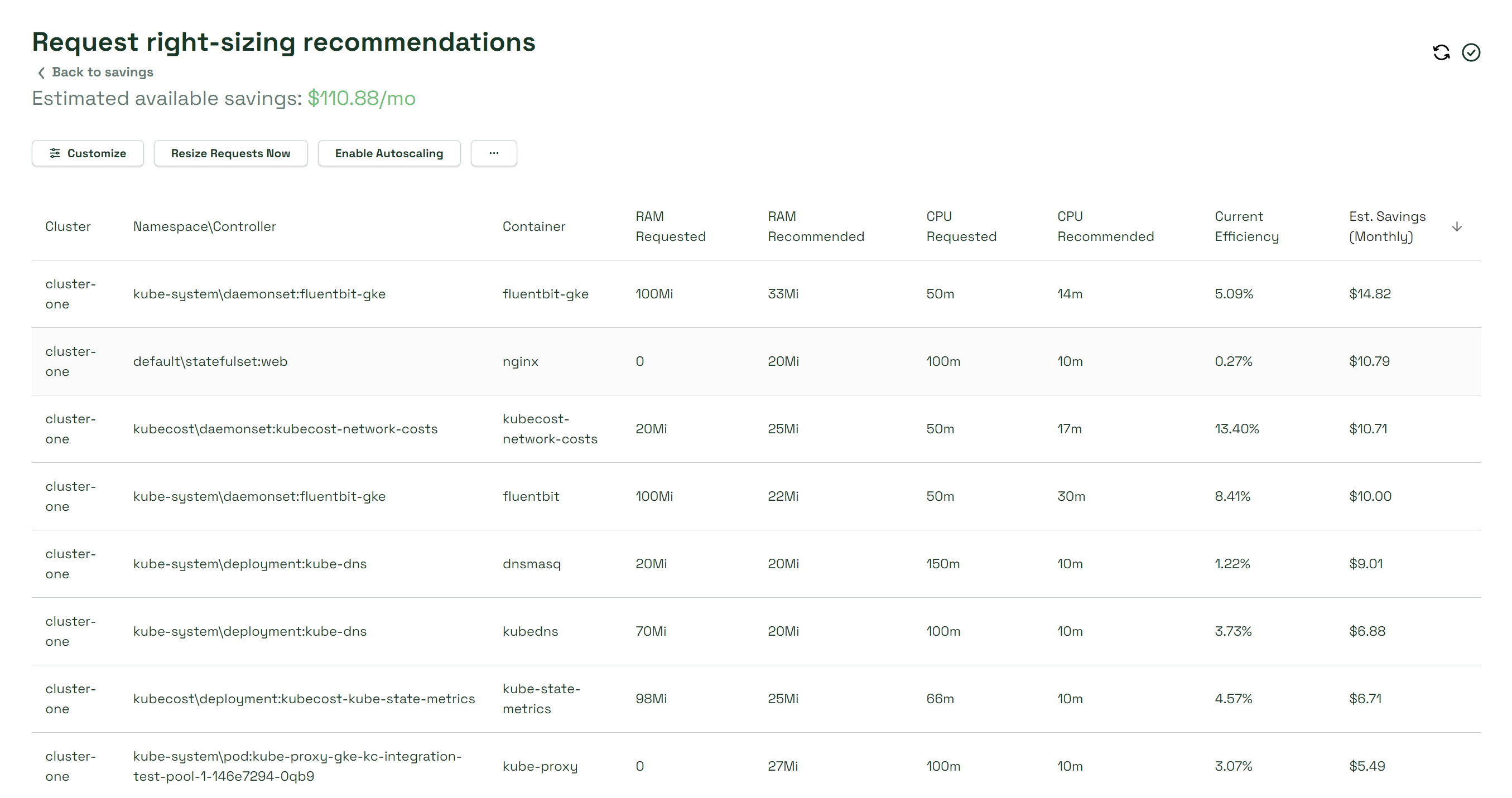Achieving Optimal Cost Efficiency for Kubernetes Clusters: Key Insights from the State of Kubernetes Cost Optimization Report
In today’s dynamic technological landscape, effective cost optimization strategies are crucial for organizations running Kubernetes clusters. We often see that companies struggle with getting visibility into their cloud costs, let alone finding smart ways to reduce their Kubernetes spend which is why we built Kubecost. This week Google released the State of Kubernetes Cost Optimization report which provides valuable insights, actionable findings, and highlights many of the ways we help our customers achieve better cost efficiency without compromising performance and reliability. Here is a summary of the key takeaways from Google’s report, offering essential guidance for organizations seeking to optimize their Kubernetes clusters, and how Kubecost helps teams address this.
Setting resource requests appropriately
A critical aspect highlighted in the report is the importance of setting resource requests accurately within Kubernetes clusters. The research underscores that many Kubernetes workloads are over-provisioned, resulting in resource waste. Inadequate resource requests can lead to application disruptions, as Kubernetes may terminate pods abruptly when resources become scarce.
Workload rightsizing has emerged as a pivotal opportunity to reduce unnecessary resource usage and optimize costs. Kubecost can provide and implement right-sizing recommendations for your supported clusters by ensuring your containers aren’t over-provisioned, that they are configured cost-effectively, and continuously right-sizing your containers and nodes.
By optimizing resource requests, organizations can strike a balance between resource allocation and application stability, driving cost optimization. Encouraging technical teams to understand the significance of setting resource requests and implementing effective rightsizing strategies can lead to substantial savings.

Balancing reliability and cost efficiency
Organizations often struggle to strike the right balance between reliability and cost efficiency within Kubernetes clusters. The report highlights instances where clusters experienced performance and reliability issues due to the unintended use of specific workload types. By being mindful of the implications of deploying BestEffort Pods and memory under-provisioned Burstable Pods, cluster owners can ensure stability and mitigate disruptions.
Prioritizing end user experience
The impact of cost optimization efforts on end user experience is a key consideration. Clusters with a high volume of BestEffort Pods or memory under-provisioned Burstable Pods tend to have lower cluster bin packing, which may tempt platform administrators to downscale or rightsize cluster nodes. However, such actions can result in unexpected application disruptions due to abrupt Pod terminations. Striking a balance between cost optimization and maintaining a seamless user experience is crucial.
Leveraging demand-based downscaling
The research reveals that elite performers excel in scaling down their clusters during off-peak hours. Achieving this efficiency is possible through effective utilization of Cluster Autoscaler, Horizontal Pod Autoscaler, and Vertical Pod Autoscaler. You can also use the Cluster Turndown and Namespace Turndown Actions in Kubecost to automatically schedule clusters or workloads to spin down when they’re unused, and spin back up when they’re needed. Organizations should focus on properly configuring workload autoscaling to enable resource removal during periods of reduced demand, maximizing cost savings.
Capitalizing on cloud discounts
Elite and high performers in cost optimization effectively leverage cloud discounts. These segments, characterized by larger clusters and dedicated cost optimization teams, incorporate significantly discounted Spot VMs and forecast long-term commitments. Kubecost’s Reserved Instances feature will provide recommendations for CPU/RAM usage to better understand your needs.

By leveraging cloud discounts, organizations can unlock substantial cost savings while maintaining high-performance levels.
Conclusion
While this summarizes only some of the many ways that organizations can save on cloud costs, The State of Kubernetes Cost Optimization report serves as a valuable resource for those seeking to enhance cost efficiency within their Kubernetes clusters. By emphasizing the importance of resource requests, prioritizing workload rightsizing, striking a balance between reliability and cost efficiency, considering end user experience, leveraging demand-based downscaling, and capitalizing on cloud discounts, businesses can optimize costs while maximizing value. Using a tool like Kubecost to implement these strategies positions organizations at the forefront of efficient Kubernetes cluster management, fostering innovation, resilience, and exceptional customer experiences.
Ready to make these changes and start saving money? Get started with Kubecost for free today.